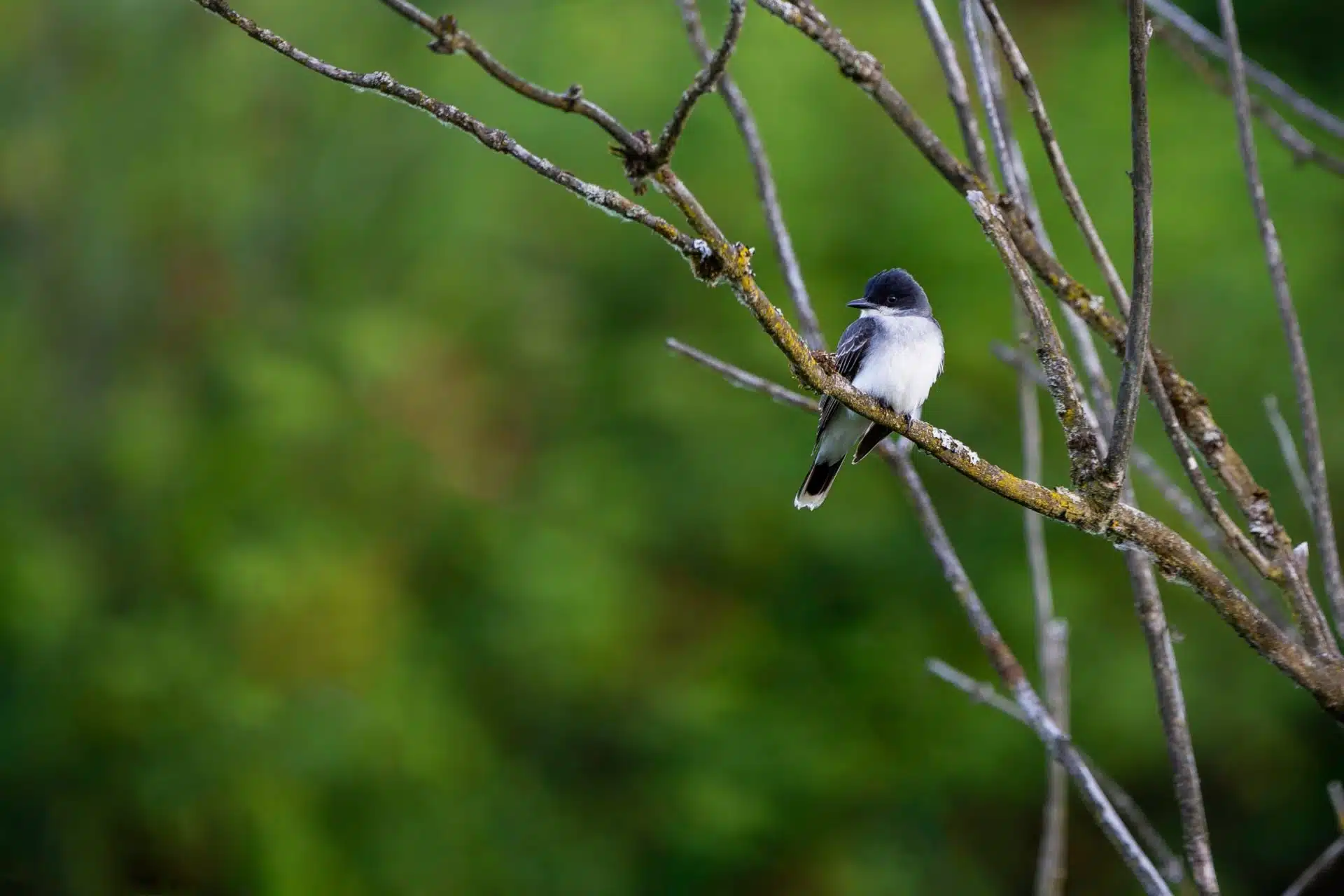Birds
Eastern Kingbird
Tyrannus tyrannus

Common and noticeable in summer, eastern kingbirds are often seen perched on a tree branches or fence posts in fields or along forest edges where water is present. They are the most widespread kingbird in North American. In the winter they travel to South America where they blend within flocks of mixed species at the edge of rivers and lakes in the forest canopy.
During the summer eastern kingbirds eat primarily flying insects including beetles, wasps, bees, winged ants, flies and leafhoppers. They perch in trees, shrubs and on fence posts waiting for insects to fly by to catch and swallow in mid air before returning back to their perch. If they grab a large prey, including grasshoppers, lizards and frogs, they will take it back to the perch and beat into submission before swallowing it whole. As the summer progresses eastern kingbirds supplement their insect diet with fruit including mulberries, serviceberries, cherries, blackberries, and elderberries. During fall migration and on to their wintering grounds in western Amazonia fruit makes up most of their diet.
Eastern kingbirds maintain a breeding territory which it defends relentlessly against all other kingbirds and predators. They nest in open habitats with scattered trees mostly over water. Females select and build the nest site. However males will sometimes influence the females’ decision by perching at a potential nest site before the females start the nest. Nesting trees can include willows, hawthorns, apples, elms, mulberries, osage-oranges and spruces. Males may even reuse a site multiple years even with a new female.
Nests are constructed by the females in 7-14 mornings. Nests can be up to seven inches across and six inches deep made of small twigs, coarse roots, dry weed stems, strips of bark. The inside of the nest is only two–three inches across and an inch or two deep with softer lining of fine rootlets, catkins, cottonwood fluffs, cattail downs, and horsehairs. Males keep an eye on their females while they are building the nest to potentially fend off predators or other kingbirds. When defending their nests eastern kingbirds will show their crown of yellow, orange or red feathers which are usually concealed. They will also stretch their beak wide for intimidation to reveal a red throat. If all else fails they will dive bomb the intruder.
Females usually lay three-four white to pinkish-white eggs with brown, lavender, gray or brown blotches. Incubation is mostly or entirely by females for 12-13 days. Both parents bring small and large insects for nestlings to consume. Young leave the nest 12-13 days and fly at 16-18 days. Both males and females feed their young for about 30 days after the young have left the nest. Generally a pair raises only one set of young during a nesting season because of the long period of care that is given to the fledglings.
Eastern kingbird populations are relatively stable due to their large breeding range. In 2012, Partners in Flight estimate eastern kingbird breeding population at 27 million, with 84 percent breeding in the U.S. and 16 percent in Canada. However populations in some areas appear to be decreasing as a result of habitat loss / degradation and pesticide use,
Best Location to View: Blueberry Pond, Corning Lake, Heath Pond, Hourglass Pond
Color: Both sexes gray upperparts and white under parts; head is slightly darker than wings and back; square white tipped tail
Range: Most of North American throughout much of southern and central Canada
Size: 7.5–9.1"
Wingspan: 13–15"




